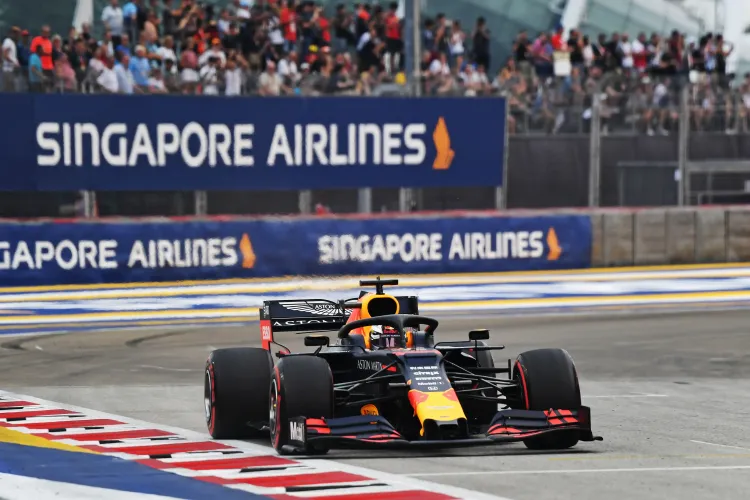Why has the FIA declared the Singapore Grand Prix a ‘heat hazard’ race?

Synopsis
Key Takeaways
- Singapore Grand Prix is declared a 'heat hazard' race.
- All teams must install cooling vests in their cars.
- Driver use of cooling vests is not mandatory.
- High temperatures and humidity pose serious challenges.
- Previous races highlighted the need for this regulation.
Singapore, Oct 2 (NationPress) The governing body of Formula 1 has officially labeled this weekend's Singapore Grand Prix as a “heat hazard” race, marking the first occasion this classification has been applied since the introduction of new regulations this year.
This decision, revealed by the FIA, arose due to weather forecasts indicating temperatures could exceed 31°C in Singapore's steamy tropical environment. As a result, all teams are now required to equip their cars with cooling-vest systems, although drivers are not obligated to use them. This initiative aims to prevent any competitive edge for those drivers who opt out of carrying the extra weight of the system.
Singapore has consistently ranked as one of the most challenging locations on the F1 calendar, attributed to its unyielding heat, high humidity, the uneven Marina Bay street circuit, and the lengthy race duration, which usually approaches the two-hour limit.
The introduction of a driver-cooling system gained momentum following the 2023 Qatar Grand Prix, where extreme conditions nearly caused several drivers to collapse. French racer Esteban Ocon was reported to have vomited in his helmet mid-race, while Williams' Logan Sargeant had to retire due to exhaustion, and others needed medical assistance post-race.
Williams driver and Grand Prix Drivers’ Association director Carlos Sainz deemed the FIA’s decision as “fair.”
“Only hot isn’t a major issue for us. We see that in Hungary, where it gets extremely hot but lacks humidity. Humidity alone isn’t a problem if the temperature isn’t high. However, when it reaches levels above 28°C with high humidity, it becomes a challenge akin to Singapore,” Sainz stated in a BBC Sport interview.
Sainz, who has competed at Marina Bay 10 times, mentioned that while the cooling vests are still in development, improvements are evident: “Teams are continuously enhancing the system’s efficiency. Initially, it could only function for about half an hour. Now, we aim for it to last at least an hour. It’s a two-hour race, and if the system fails, I’ll still perform as I usually do. But if it operates correctly, it alleviates some suffering.”
The Spanish racer confirmed he tested the vest during the Saudi Arabian Grand Prix earlier this year, where it lasted approximately 15-20 minutes. Mercedes driver George Russell also tried the technology in Bahrain and remarked to BBC Sport that it was “definitely very noticeable.”
“At the race's start, the temperature was around 16°C circulating through my body, which feels quite pleasant compared to a cockpit temperature exceeding 50°C,” Russell added.









